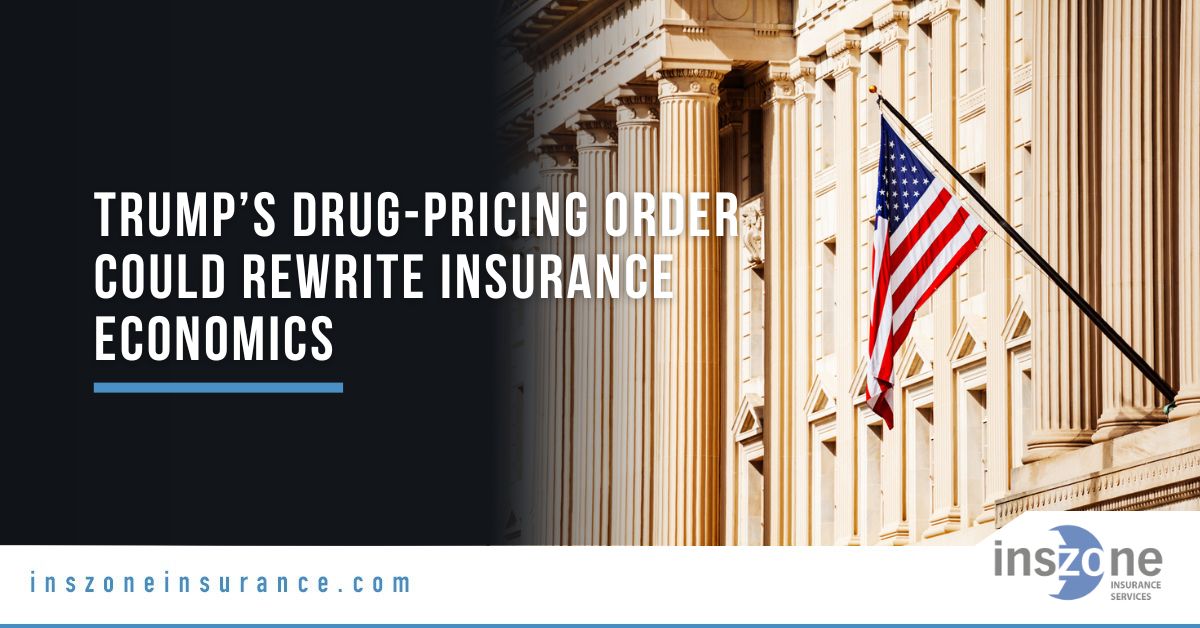Trump’s Drug-Pricing Order Could Rewrite Insurance Economics
1. What exactly did the order do?
On , President Trump signed the executive order “Delivering Most-Favored-Nation Prescription Drug Pricing to American Patients.”
- Caps U.S. prices at the lowest level charged in a peer country.
The Department of Health and Human Services (HHS) must ensure Americans never pay more than this “most-favored-nation” (MFN) price. - Creates a direct-to-consumer (DTC) pathway.
Drug makers that agree to MFN prices can sell straight to patients, bypassing pharmacy-benefit managers (PBMs) and, in some cases, insurers. - Sets aggressive timelines.
HHS has 30 days to send MFN target prices to manufacturers and up to 180 days to publish rules if companies or PBMs resist.
2. Who feels the impact first?
| Stakeholder | Near-term impact | Why it matters |
|---|---|---|
| Pharmacy-benefit managers (PBMs) e.g., CVS Caremark, Express Scripts, OptumRx |
High — share prices fell 4–6 % | MFN cash sales erase rebates and spread pricing worth ≈ $28 billion/year. |
| Commercial insurers & self-funded employers | Moderate | DTC sales could move drug-spend data outside the plan, forcing new copay-accumulator rules to keep members “in network.” |
| Drug manufacturers | Mixed | Some will pilot DTC storefronts to dodge deeper MFN cuts; others may litigate. |
| Consumers | Unclear timing | Savings depend on shipping, counseling, and whether the rules survive court challenges. |
3. Why is skipping PBMs a big deal for insurance?
PBMs negotiate rebates, build formularies, and keep a slice of every fill. Direct cash sales at MFN prices mean:
- Lost rebate flow — plans that rely on rebate guarantees could face budget gaps.
- Benefit-design headaches — if a member buys outside the PBM channel, will it count toward the deductible? Insurers may tighten accumulator rules or add “cash-only” tiers.
- Network-pharmacy pressure — small drugstores could lose sales if manufacturers ship directly.
4. How might insurers respond?
- Rewrite formularies to steer members back to in-network fills and keep utilization data.
- Expand specialty-pharmacy services (white-bagging, home infusion).
- Lobby for guardrails (e.g., require MFN sellers to report data so spending still flows into medical-loss ratios).
- Re-price 2026 premiums early, citing rebate uncertainty.
5. Where could consumers actually see lower prices?
- High-cost self-administered drugs — GLP-1 weight-loss injectables are the likeliest pilot candidates; MFN could cut list prices 60–90 %.
- Everyday lifesavers — insulin and rescue inhalers remain popular political targets with long safety records.
6. Frequently asked questions (FAQs)
Q 1. Will I be able to order any drug online at a Canada-level price tomorrow?
No. HHS still must write detailed regulations, build secure distribution channels, and defend the rules in court. Pilot programs are unlikely before late 2026.
Q 2. Does MFN pricing end my current insurance drug benefit?
No, but it may split the market: plans continue covering generics and lower-cost brands, while pricey specialty drugs shift to MFN cash channels.
Q 3. Could insurers refuse to count MFN purchases toward my deductible?
Possibly. Today, some accumulator programs already exclude manufacturer assistance. Federal or state regulators may need to clarify if MFN cash should count.
Q 4. Will drug innovation suffer?
Pharma groups say yes, warning that MFN caps shrink R&D budgets. Supporters argue higher foreign-market prices can offset lower U.S. prices. Courts will hear the debate.
Q 5. What if manufacturers refuse MFN pricing?
The order instructs HHS to explore importation waivers and consider antitrust action against “anti-competitive practices.”
Sources & further reading
- Executive order text — White House — whitehouse.gov
- White House fact sheet (Apr 15 2025) — whitehouse.gov
- American Hospital Association summary — aha.org
- The Guardian analysis of expected price cuts — theguardian.com
- Benzinga report on PBM stock reaction — benzinga.com
- Fast Company coverage of market impact — fastcompany.com
- Drug Channels: DTC trends (Mar 14 2025) — drugchannels.net
- Latham & Watkins Drug Pricing Digest #45 — lw.com

